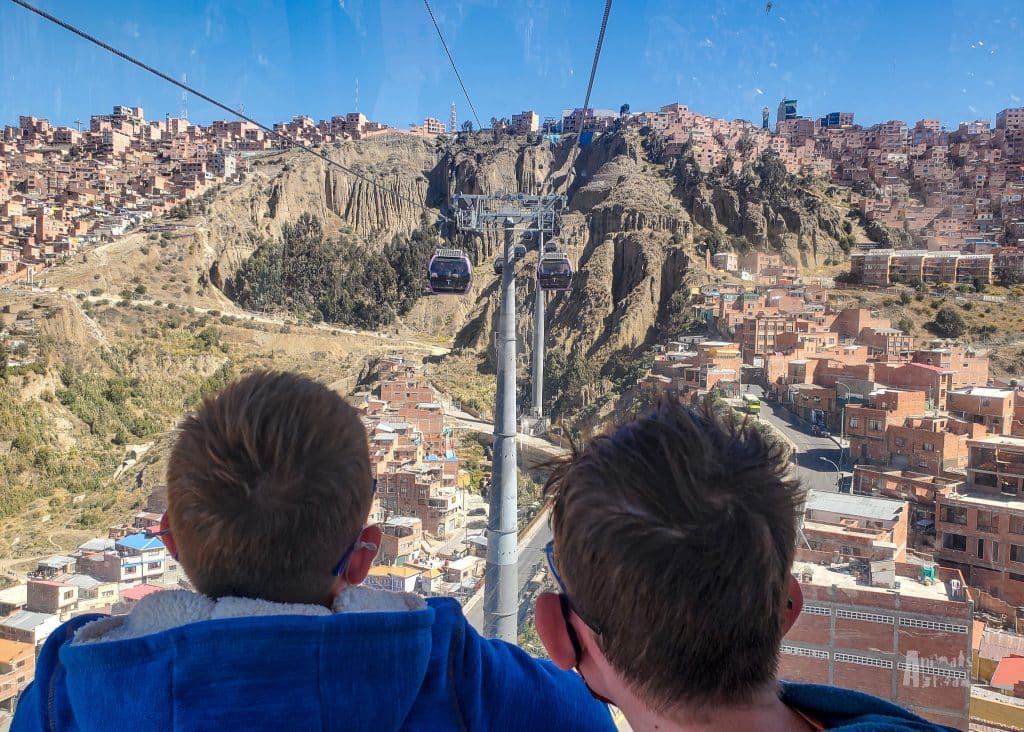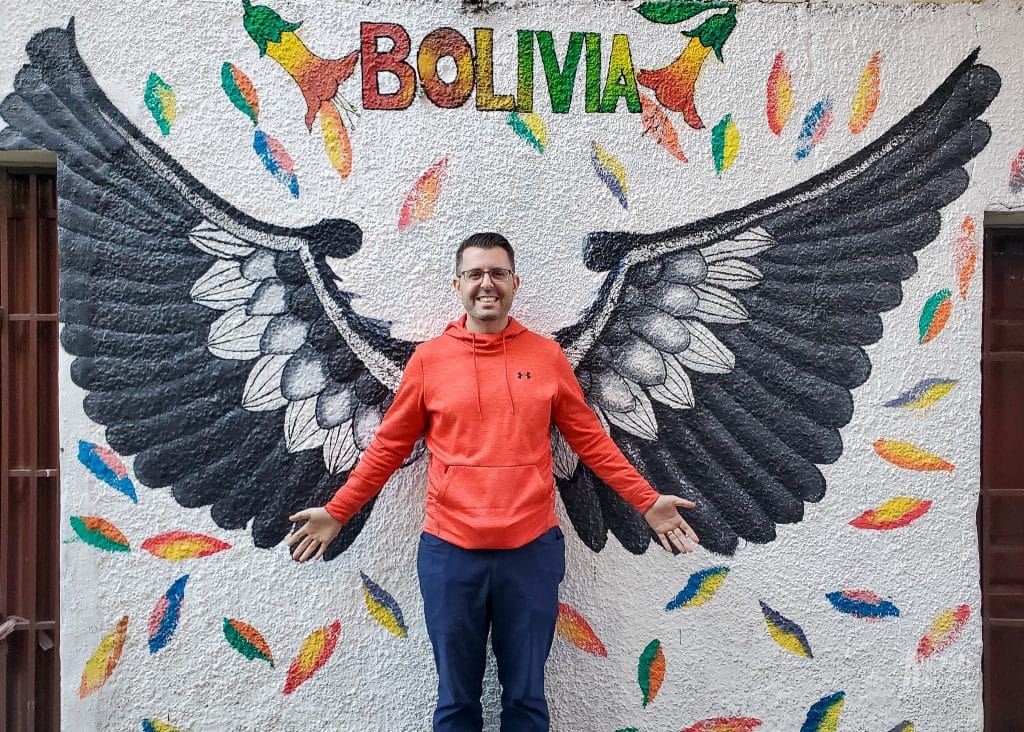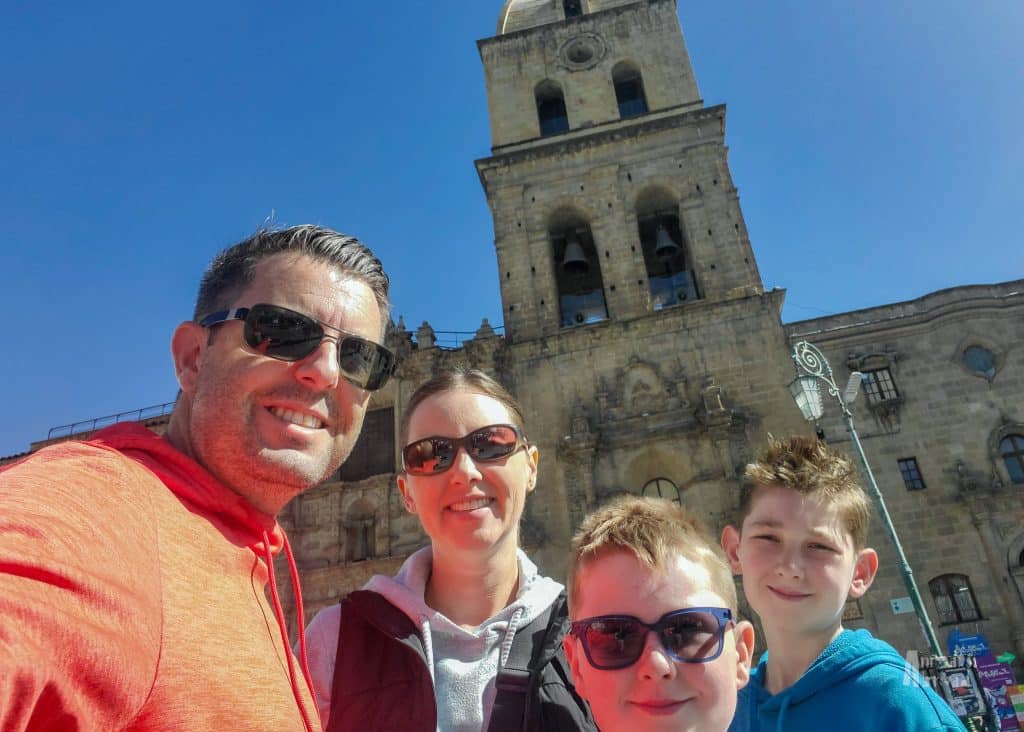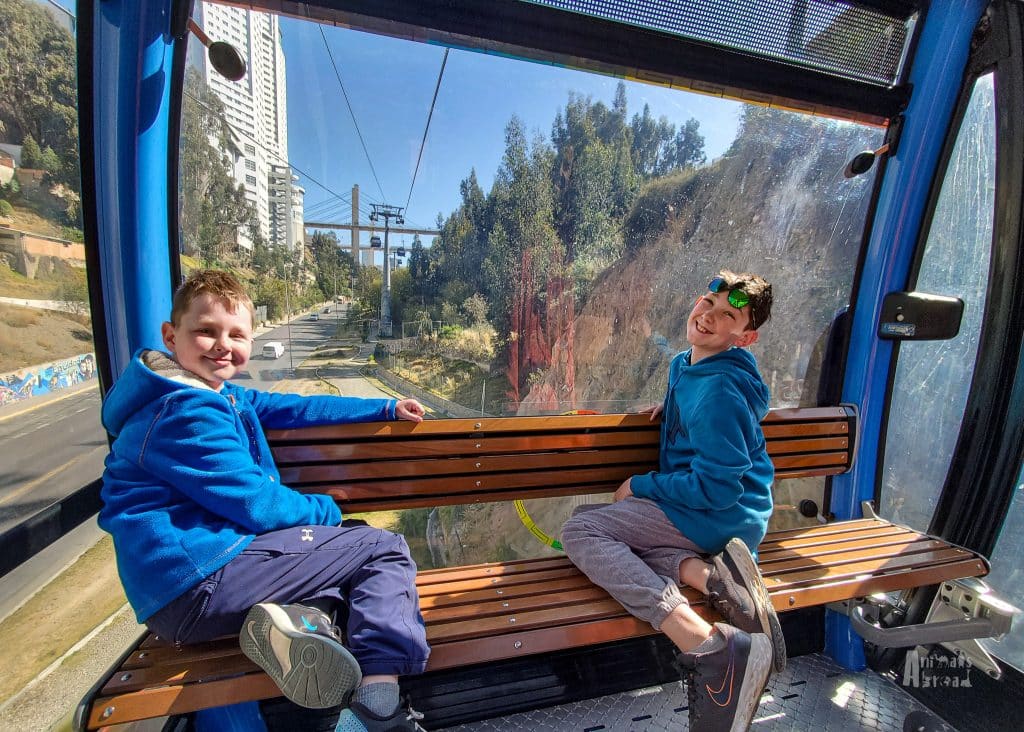“Why am I out of breath walking to the kitchen?” That was my first thought when we arrived in La Paz, Bolivia—3,650 metres (nearly 12,000 feet) above sea level. The city is dramatic, colourful, and breathtaking in every sense of the word. But its altitude means you have to plan your visit around how your body reacts.
Water, water, and more water—that quickly became the motto of our first few days as we tried to acclimate. For context, La Paz is more than twice as high as Denver, Colorado, and higher than the altitude at which airlines deploy emergency oxygen. This is not a place to power through.

If altitude sickness hits you, don’t worry. You’re not alone—and it’s manageable. Here’s what to expect and how to ease the symptoms for both kids and adults.
What is Altitude Sickness?
At higher elevations, the air contains less oxygen. When you arrive somewhere like La Paz, your body doesn’t have time to adjust, and that can trigger altitude sickness, or acute mountain sickness (AMS). It often starts around 2,500 metres (8,200 feet) and above.
What are the symptoms of mild altitude sickness?
You might notice:
• Headache
• Nausea or vomiting
• Shortness of breath
• Fatigue
• Dizziness or light-headedness
• Loss of appetite
• Trouble sleeping
Kids respond similarly to adults, though their symptoms might be harder to spot. Look for changes in behaviour like tiredness, irritability, lack of appetite, or disrupted sleep.
Tips for Managing Altitude Sickness in Kids (and Adults)
• Build in a rest day: It’s tempting to dive straight into sightseeing, but your body might have other plans. Give everyone time to rest on arrival.
• Keep activities light at first: Plan half-day outings and restful afternoons—especially important for kids. Hiking or walking tours can wait.
• Take it slow: If your kids are anything like ours, they don’t walk—they run. Our youngest quickly noticed how out of breath he was at his usual pace. Even a short flight of stairs left us gasping, and the steep hills of La Paz certainly didn’t help.
• Drink plenty of water: Dehydration can make symptoms worse.
• Eat carbs: Carbohydrates require less oxygen to metabolize than fats or protein, making them a good energy source at altitude. Bonus: Kids usually love meals with bread, pasta, rice, or potatoes. Fruit is another great choice—hydrating and packed with natural sugars for energy.
• Avoid processed sugar: Candy, soda, and sugary cereals can cause energy crashes and contribute to dehydration, both of which make symptoms worse.
• Use over-the-counter meds as needed: Tylenol for headaches or Gravol for nausea can help.
• Talk to your doctor: Before your trip, speak with your doctor about altitude sickness and whether medications like acetazolamide (Diamox) might be right for your family. Starting meds a couple of days before arrival can ease symptoms and give you a smoother start at high elevations.
For Adults: A Few Extra Tips
• Avoid alcohol: Altitude impairs your cognitive awareness. Alcohol can worsen this, making it harder to make smart decisions, especially if you’re navigating unfamiliar places.
• Limit caffeine: Caffeine is a diuretic, so it contributes to dehydration. It can also interfere with sleep. If you’re sensitive to altitude, reducing caffeine, even slightly, can help.

What About Coca Products?
Coca is widely used in the Andes to help manage altitude symptoms. You’ll find it available as tea, candy, or loose leaves to chew.
Coca can:
• Act as a mild stimulant, increasing your breathing rate to help get more oxygen into your system.
• Reduce fatigue and boost energy for walking or hiking.
• Ease headaches and nausea.
We all found the tea and lozenges helpful, and our kids liked the taste of the candies.
Important: Coca is legal and culturally accepted in Bolivia and other Andean countries, but it’s banned in many others—including Canada and the U.S. Don’t bring it home.

Adjusting Your Itinerary
If you can, start your Bolivia trip at a lower altitude and work your way up. That’s not always possible since most international flights land in La Paz, but it’s worth considering.
Once in the country, think about the order of your destinations:
• Uyuni Salt Flats: One of Bolivia’s top attractions, but many tours go as high as 4,900 metres (16,000 feet). Acclimate first.
• Toro Toro National Park: Popular hikes like Ciudad de Itas reach 3,800 metres (12,467 feet). You’ll enjoy them more after your body adjusts.
• Rurrenabaque and the Amazon: At just 274 metres, this is a great low-altitude starting point. Other good options include Santa Cruz (400m), Cochabamba (2,558m), and Sucre (2,800m).
Our Experience in La Paz
We came prepared—we started acetazolamide (Diamox) two days before our flight, based on advice from our doctor. But even with that, the effects hit fast.
We arrived at El Alto airport at 3 a.m., and before we even left the terminal, the symptoms started: dizziness, nausea, and fatigue. By morning, the nausea had passed, but we were left with headaches, no appetite, and a strange breathlessness just from walking across the room.
Mason and I had intense headaches that responded well to ibuprofen. But it was clear we needed to slow down. We spent our first day resting, aside from a quick walk to the grocery store. As the days went on, we stuck to half-day activities and quiet afternoons—and gradually, we felt more like ourselves again.
Learn More: Family Guide to La Paz: A Flexible 5-Day Itinerary

Go Slow, Drink Water, and Be Kind to Your Body
Altitude sickness can feel intense, but with a little planning, it doesn’t have to derail your trip. Rest, hydrate, eat well, and listen to your body. And remember—it’s okay to take it easy. You’re not missing out—you’re giving yourself the chance to enjoy this incredible place fully, once your body is ready for it.

Ready to Explore Bolivia?
Check out these related posts to help plan your trip:
• Bolivia with Kids: A 27-Day Itinerary
• Travelling to the Amazon: An Adventure in Itself
• Exploring Bolivia’s Amazon: Pampas and Madidi National Park
• Chasing Jaguars in Bolivia: A Family Safari in Jaguarland
• Visiting Toro Toro National Park: Know Before You Go
• Bolivia’s Uyuni Salt Flats with Kids: A Family Adventure

